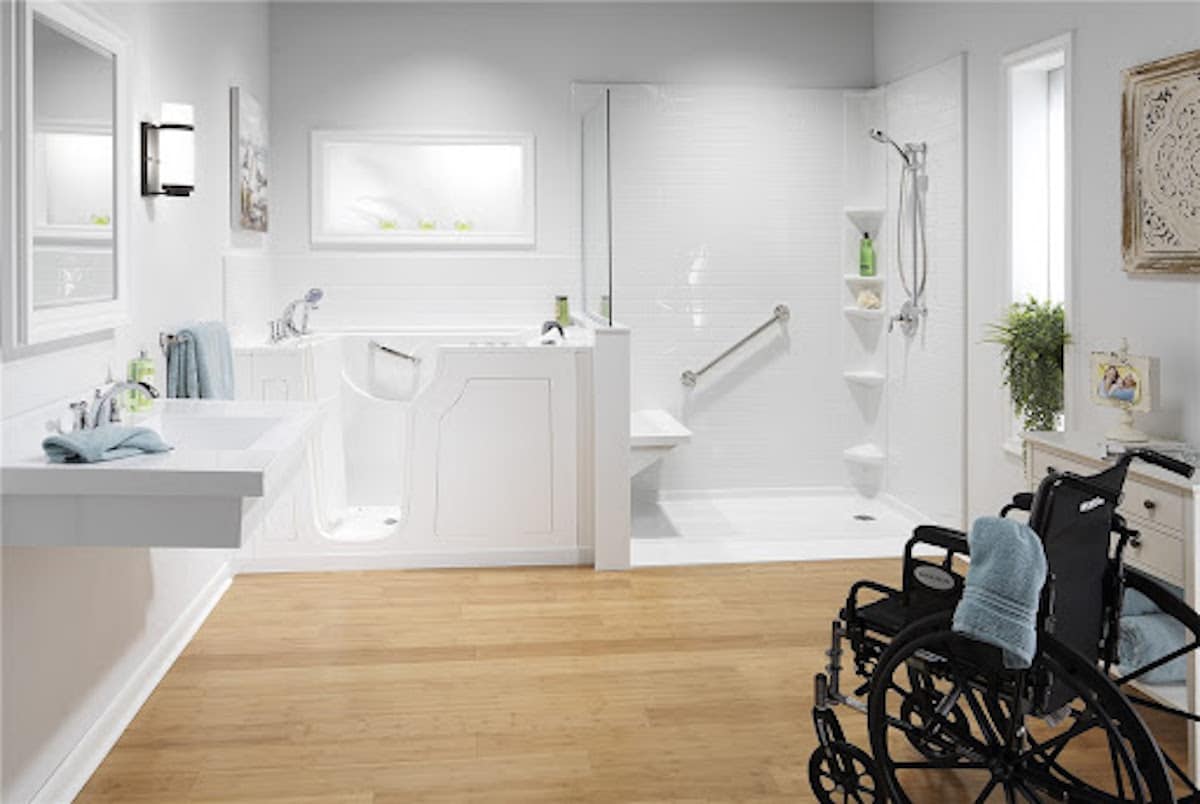Table of Contents
As individuals age, it becomes increasingly important to prioritize their safety and well-being. One area of concern is the bathroom, where slips and falls are common.
To address this issue, many elderly individuals opt for walk-in tubs, which provide convenience, accessibility, and safety.
However, with numerous available options, choosing the best walk-in tub can take time and effort.
In this ultimate guide, we will explore the key factors to consider when selecting a bathtub for elderly.
Understanding the Need for Walk-In Tubs
Their mobility may decline, making it challenging to use traditional bathtubs safely. These tubs address these difficulties by providing a low-threshold entry, safety handrails, and a comfortable seating area.
By understanding the unique needs of elderly individuals, we can make an informed decision when choosing the best walk in tubs for seniors.
Benefits of Walk-In Tubs for the Elderly
Walk-in tubs offer a range of benefits for elderly individuals, including enhanced safety, therapeutic features, and independence.
They reduce the risk of slips and falls, promote relaxation and stress relief through hydrotherapy options, and allow elderly individuals to bathe comfortably without assistance. These benefits contribute to improved well-being and a better quality of life.
Factors to Consider When Choosing a Walk-In Tub
Size and Dimensions
The size and dimensions of the walk-in tub are crucial considerations to ensure it fits comfortably in the bathroom space available. Measuring the bathroom accurately and considering doorways and corridors are essential to avoid installation issues.
Accessibility Features
Walk-in tubs should have user-friendly accessibility features such as low-step entry, anti-slip flooring, grab bars, and an easy-to-reach handheld showerhead. These features ensure easy access and enhanced safety during entry, exit, and bathing.
Safety Features
Look for safety features like leak-proof doors, anti-scald technology, and a built-in seat height that suits the elderly individual’s needs. These features minimize the risk of accidents and provide a secure bathing experience.
Material and Durability
Opt for walk-in tubs made from high-quality and durable materials. Acrylic and fiberglass are popular due to their strength, ease of maintenance, and resistance to stains and discoloration.
Water and Drainage Systems
Consider the water capacity and drainage system of the walk-in tub. Ensure the water capacity is sufficient for a comfortable bath, and the drainage system efficiently removes water after use.
Installation Requirements
Evaluate the installation requirements, including plumbing and electrical considerations. Determine if any modifications or additions to the bathroom are necessary and assess the associated costs.
Cost and Budget Considerations
Set a budget for the walk-in tub and compare prices from different manufacturers. Remember that the cheapest option may not always provide the desired quality, so balance affordability with functionality and durability.
Warranty and After-Sales Support
Check the warranty offered by the manufacturer and inquire about after-sales support. A reliable warranty and excellent customer service can provide peace of mind and assistance if any issues arise in the future.
Popular Types of Walk-In Tubs
Soaker Tubs
Soaker tubs focus on deep soaking, providing a relaxing bathing experience without therapeutic features. They are a cost-effective option for individuals seeking comfort and ease of use.
Hydrotherapy Tubs
Hydrotherapy tubs offer therapeutic benefits through water and air jets. These tubs provide massage-like sensations, pain relief, improved circulation, and relaxation. They suit individuals with arthritis, joint pain, or other health conditions.
Combination Tubs
Combination tubs integrate both soaker and hydrotherapy features. They offer the best of both worlds, catering to individuals who desire relaxation and therapeutic benefits.
Bariatric Tubs
Bariatric tubs are designed for individuals with higher weight capacities. They provide extra space, reinforced construction, and comfortable seating, ensuring safety and comfort for heavier individuals.
Wheelchair Accessible Tubs
Wheelchair-accessible tubs have wider doors and spacious interiors to accommodate individuals who use wheelchairs or walkers. These tubs offer independence and ease of use for individuals with mobility challenges.
Evaluating Your Specific Needs and Preferences
Before deciding, carefully evaluate the specific needs and preferences of the elderly individual using the walk-in tub. Consider mobility, health conditions, bathing habits, and personal preferences. This evaluation will help determine the most suitable type of walk-in tub.
Researching and Comparing Different Brands and Models
Conduct thorough research on different brands and models of walk-in tubs. Compare their features, warranties, customer reviews, and reputation. Look for reliable manufacturers with a track record of producing high-quality walk-in tubs.
Reading Customer Reviews and Testimonials
Reading customer reviews and testimonials can provide valuable insights into specific walk-in tub models’ actual performance and customer satisfaction. Look for reviews from verified buyers and pay attention to positive and negative feedback.
Consulting with Professionals
Consulting with professionals, such as occupational therapists or bathroom remodelers, can offer expert advice and guidance in selecting the best walk-in tub. These professionals can assess the specific needs of the elderly individual and recommend suitable options.
Making the Final Decision
After thorough research, evaluations, and consultations, it’s time to decide. Consider all the gathered information, weigh the pros and cons of each option, and choose the walk-in tub that best meets the safety, accessibility, and comfort requirements of the elderly individual.


